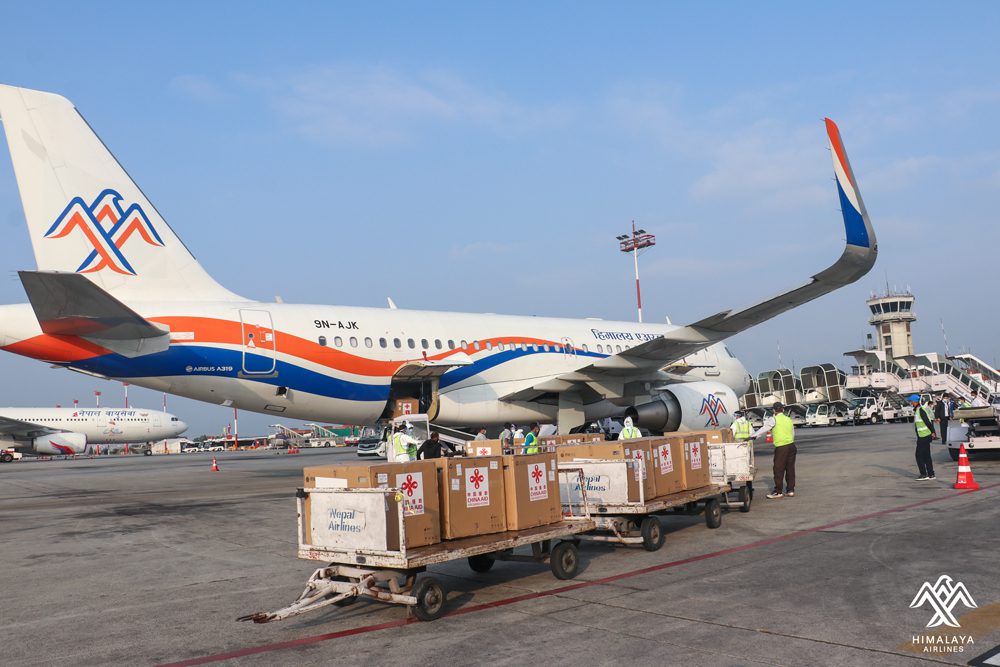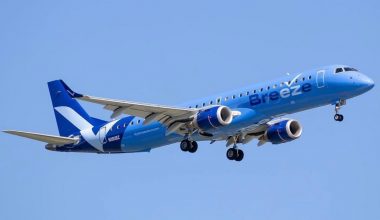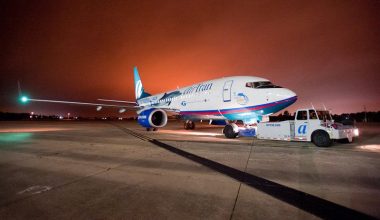Thousands of airports in the world act as significant economic drivers for respective regions. Airports are massive employers generating jobs for millions of people every year. But how do airports make money? What are their sources of revenue? Let’s dive deep into the income sources of airports around the world.
Before knowing how airports make money, you must first understand who owns and operates the airport. Usually, airports are owned by public entities such as municipalities, which rent out the space to an airport authority or a long-term public-private partnership. The owner of the airport largely decides the end goal of an airport.

Federal or local governments own almost all commercial airports in the US. However, they contract out numerous airport amenities to private companies such as retail shops, car rentals, lounges, restaurants, etc. While airports may receive taxpayer subsidies, their operations are largely self-sustaining–funded by those who use them.
A majority of the airports are commercial enterprises whose end goal is to generate revenue. Keeping in line with their primary function of handling passengers’ movements in and out of the aircraft, they aim to earn profit and diversify their revenue streams to sustain their operations for the long term. So, how do airports make money?
Sources of revenue for airports
There is not just a single source of revenue for airports, as they make money in various ways. Depending on the nature of activities airports handle, their income source can be divided into two categories: aeronautical and non-aeronautical revenue.
Making money from aeronautical services
Aeronautical revenue accounts for over 50% of airport income and it comes from airlines and their passengers. Airports offer aeronautical services to facilitate the incoming and outgoing of airlines’ aircraft and receive charges for them. Let’s see it this way: airports are landlords and airlines are airport tenants. Airlines use the airport space including terminals, gates, airport runways, parking spaces, storage facilities, etc. for their flight operations and hence pay several charges such as landing fees, terminal space rental fees, parking fees, usage fees, etc.
Although passengers don’t directly pay for most airport services, airports make the vast majority of revenue from passenger fees. As passengers pay ticket prices, airports charge respective carriers for each passenger and the services entailed in handling them at the airport. So, the airline ticket price not just includes seat and luggage fees but also the airport charge. The higher the number of passengers circulating through the airport, the greater their earnings will be. In contrast, the decline in traffic results in significant drops in revenues.

Airlines pay terminal and runway fees based on the aircraft’s weight. Naturally, a wide-body aircraft occupy more space and weigh more than a narrow-body jet so they bring higher charges. Airports levy charges considering aircraft type and size, the weight of the plane, landing time, and sometimes emissions and noise (for e.g., London Heathrow).
Airport slots earn lucrative for airport owners as they have greater commercial value among airlines. The level 3 airports, which have constrained capacity due to available infrastructure, use a slot system to aid the safe and efficient operations of the airport. In capacity-constrained airports, airlines pay millions for airport slots to schedule a landing or departure there during a specific time period. In 2008, Continental Airlines bought four daily slot pairs at $209 million at LHR Airport. Similarly, in 2016, Oman Air paid a hefty sum amounting to $75 million to purchase a pair of takeoff and landing slots at Heathrow, beating the $60 million record paid by American Airlines for a slot in 2015.
Cargo revenue for airports
When the COVID-19 pandemic punctured passenger air travel and caused havoc with air traffic numbers, airports worldwide created new revenue streams by handling increased cargo loads with a rise in global e-commerce trade, disruptions to international supply chains, and decelerated sea freight operations. Cargo operations were a godsend for airports, providing much-needed relief and mitigating losses during the pandemic.

Air cargo operations comprise around 8%-10% of total revenue for airports involved in the delivery of tons and tons of goods to international markets. Airports have cargo handling hubs, making money from freighter movements, rental of land and facilities, handling charges, etc.
Non-aeronautical source of revenue for airports
While the vast majority of airport revenue comes from airlines and passengers, another portion of its income comes from non-aeronautical activities. How do airports make money from non-aeronautical activities?
As an entrepreneurial business, airports hire out restaurants, hotels, art installations, retail shops, duty-free centers, and other spaces to different entities willing to take leverage of airports to expand their business. Apart from airlines and the traveling public, they also fund their operations through returns from retail establishments, parking concessions, car rental companies, lounges, restaurants, etc.
- Restaurants
Many go-to restaurants at the airport cater to the culinary needs of passengers. Regional restaurants are brand-enhancing investments for an airport to make because they promote and reflect the region they are in. On the other hand, airports attract international footfall and offer captivity for a brand name to grow its highest potential. Airports are excellent locations for large restaurant chains, so these businesses pay a high amount of money for airport outlets to serve travelers with high disposable income.
- Retail business and duty-free centers
Airports make money from retail businesses and duty-free centers by levying a certain percentage on every item they sell. Duty-free and travel retail encompass an important commercial revenue stream for airports to generate a profit and contribute to their overall competitiveness. Revenues coming from strong performing duty-free and travel retail operation form an inherent part of the competitive dynamic which are increasingly playing out in airport markets today.

- Parking lots
Airports also make money by leasing out parking slots for thousands of cars, vans, and buses that deliver and pick up passengers. Unlike past times when airports acted simply as a transfer point between ground and sky, they have diversified their operations with the popularity of air travel over time. Parking lots have become a key part of an airport’s design with the change in the business model. At the present time, airports generate income through various types of parking systems such as drop-off and pick-up zones, cell phone waiting lots, short-term parking, long-term on-site parking, long-term off-site parking, on-site car rental lots, etc.

- Advertising
Airports are ideal places to advertise the cities they are in. Being aerial gateways, they give a distinctive vibe reflective of the city they are located in. Because passengers should feel different upon arrival at each city, each respective airport features whatever a city’s ‘thing’ is to create a unique passenger experience.
Airports have advertising space inside and outside terminals that they sell to boost non-aeronautical commercial revenue. Besides, they also host special events and sponsored spaces to earn extra and maintain financial viability.
Apart from these, airports lease space for movie theaters, local art installations, conference halls, meeting rooms, etc. With the changing times, airports are becoming new hot venues for an array of businesses that bring extra revenue and enrich passenger experience throughout their airport journey.
In a nutshell: How do airports make money?
Airports worldwide have come a long way, evolving from simple transfer points and infrastructure providers into business-oriented service providers. Although airports used to make money with airline and passenger fees in the early days, economic trends have challenged this business model and made them shift to non-aeronautical revenues to sustain their financial health. Owing to their key task of circulating passengers in and out, aeronautical revenue still comprises a large chunk of airports’ overall income. Nonetheless, non-aeronautical activities such as retail, duty-free, restaurants, advertising, etc. determine the financial viability of airports and come to their rescue in times of susceptible economic conditions.
Most profitable airports in the world
If it’s not obvious, airports with the highest passenger traffic are often the most profitable ones. More passengers and aircraft movements in an airport mean a significant rise in revenue, whereas a decline in traffic means a serious financial blow. Some of the most profitable airports in the world include London Heathrow Airport, London Gatwick, Hartsfield-Jackson Atlanta Airport, Dallas/Fort Worth International Airport, Dubai International Airport, Istanbul Airport, etc. During the outbreak of the coronavirus pandemic, airports worldwide went through the most disruptive period with mounting losses and massive job cuts.

While many airports in America are government-run as static utilities, major British airports are fully or mainly privatized. Airport as a commercial entity should be self-sustaining and try to expand and operate without taxpayer-funded support from state or local sources. It must have adequate resources or a long-term investment vision to meet the growing aviation needs or face a looming investment crisis.






